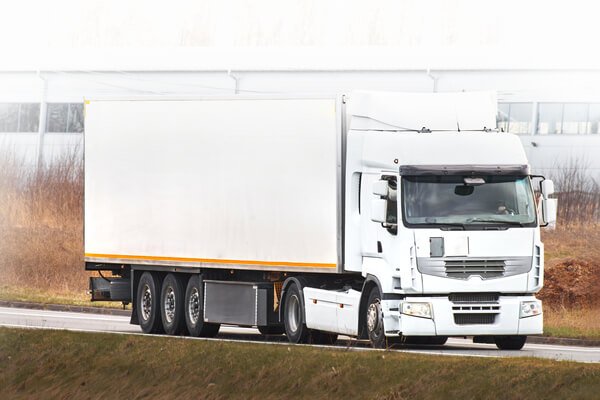Picture this: you’re a small business owner in Melbourne, sipping your flat white, staring at a spreadsheet of shipping costs that’s giving you a headache. You need to get your artisanal candles to a boutique in Sydney, but you’re also supplying a local shop in Geelong. Two different deliveries, two different worlds—intrastate and interstate linehaul. Which one’s going to save you time, money, and a few grey hairs? Let’s break it down in a way that feels less like a logistics textbook and more like a chat over coffee.
I’ve been in the logistics game for a while (or at least, I’ve talked to enough truckies and warehouse managers to feel like I have), and one thing’s clear: moving goods within Australia is a beast of its own. Whether you’re hauling freight across state lines or keeping it local, there are costs, timelines, and regulations to juggle. So, let’s dive into the nitty-gritty of intrastate vs interstate linehaul, with a focus on Australia’s unique landscape.
What’s the Difference, Anyway?
Intrastate linehaul is all about keeping things within one state’s borders. Think Melbourne to Geelong, or Brisbane to the Gold Coast. It’s the short game—familiar roads, fewer variables. Interstate linehaul, on the other hand, is the long haul: Sydney to Perth, Adelaide to Darwin, or any route that crosses state lines. It’s the big leagues, with more distance, more complexity, and, naturally, more paperwork.
Both have their place in Australia’s freight ecosystem, but they’re as different as a Barbie in Bondi versus one in Broome. Let’s unpack the key factors: cost, time, and regulations.
Cost: Where’s Your Wallet Hurting?
When it comes to cost, intrastate linehaul is usually the kinder option for your bank account. Shorter distances mean lower fuel costs, fewer tolls, and less wear on the trucks. For example, sending a pallet of wine from Adelaide’s Barossa Valley to a restaurant in Port Adelaide might set you back a few hundred bucks, depending on the carrier and load size. It’s straightforward, with fewer middlemen and less red tape.
Interstate, though? That’s a different story. Take a shipment from Melbourne to Brisbane—about 1,700 km if you’re taking the Newell Highway. You’re looking at higher fuel costs, potential overnight driver allowances, and maybe even tolls on major routes like the Hume. A full truckload could easily run you $2,000–$4,000, depending on the freight type and urgency. And if you’re shipping something like perishables (say, Tassie cherries to Queensland), you’ll need refrigerated transport, which bumps up the price even more.
One thing I’ve noticed talking to logistics folks is that interstate costs can also creep up because of “hidden” fees. Think of border compliance checks or extra insurance for long-haul trips. Plus, if your goods are crossing the Nullarbor or heading to remote spots like Karratha, you’re paying for the sheer effort of getting there. Intrastate keeps it simpler, but don’t be fooled—last-minute bookings or peak seasons (like pre-Christmas madness) can still sting, no matter the route.
Time: How Fast Can You Get It There?
Time is where intrastate linehaul shines like a sunny day in Surfers Paradise. A trip from Sydney to Newcastle? You’re looking at a few hours, maybe half a day with loading and unloading. Most intrastate routes in Australia stick to well-trodden paths, with predictable traffic (unless you’re stuck in Melbourne’s Monash Freeway gridlock—yikes). For businesses needing same-day or next-day delivery, intrastate is your best mate.
Interstate linehaul, though, is a marathon, not a sprint. Melbourne to Sydney might take 12–24 hours for a truck, assuming no breakdowns or roadworks on the Hume. But if you’re going cross-country—say, Sydney to Perth—you’re talking 3–5 days, depending on the carrier’s schedule and whether they’re consolidating loads. Weather can also throw a spanner in the works. Ever seen a truck stuck on the Stuart Highway during the Wet Season in the NT? It’s not pretty.
One quirky thing about Australia’s interstate routes is the sheer scale of our country. We’re not just talking distance; we’re talking vast, empty stretches where road trains rule and service stations are few and far between. That remoteness adds time, especially for deliveries to places like Alice Springs or Broome. Intrastate keeps things tighter, but if your goods are time-sensitive, you’ll still need to plan around peak traffic or public holidays.
Regulations: The Red Tape Tango
Now, let’s talk about regulations—the part that makes logistics managers reach for the Panadol. Australia’s a federation, which means every state and territory has its own rules, but there’s also a national framework to keep things (somewhat) consistent. Intrastate linehaul is generally simpler because you’re dealing with one state’s laws. In Victoria, for instance, you’re under the Heavy Vehicle National Law (HVNL), which covers things like driver fatigue, load limits, and vehicle standards. It’s a single set of rules, and most carriers know it like the back of their hand.
Interstate linehaul, though? That’s where things get spicy. Crossing state borders means navigating a patchwork of regulations, even with the HVNL trying to standardize things. For example, a truck moving from NSW to Queensland needs to comply with both states’ rules on things like load restraints or driver logbooks. And don’t get me started on permits for oversized loads—moving a massive mining rig from WA to SA can involve a mountain of paperwork, especially if you’re hitting restricted roads.
Then there’s biosecurity. Australia’s strict about this, and for good reason—we’ve got ecosystems to protect. Sending fruit from Victoria to South Australia? You’ll need to clear the Fruit Fly Exclusion Zone rules, which might mean extra inspections or certifications. Intrastate trips rarely face this level of scrutiny, unless you’re moving between specific zones within a state (like WA’s Ord River area).
One story I heard from a mate in the industry sums it up: a driver hauling furniture from Brisbane to Adelaide got held up at the SA border because of a missing biosecurity certificate. Cost him a day and a hefty fine. Interstate moves demand more planning, and you’d better have your ducks in a row.
Real-World Tips for Choosing
So, how do you decide between intrastate and interstate linehaul? It comes down to your priorities. If you’re a small business like that Melbourne candle-maker, intrastate deliveries to local shops are your bread and butter—cheap, fast, and low-hassle. But if you’re expanding to interstate markets, you’ll need to weigh the higher costs and longer timelines against the growth potential. A Sydney retailer might love your candles, but are you ready to fork out for a refrigerated truck to keep them from melting in transit?
Here are a few tips I’ve picked up from chatting with logistics pros:
- For Intrastate: Shop around for local carriers. Smaller operators often have better rates for short hauls, especially if you’re a regular. Also, consider consolidating multiple deliveries to save on costs.
- For Interstate: Look for carriers with established routes (like Sydney–Melbourne or Brisbane–Adelaide). They’re often cheaper and faster because they’re not reinventing the wheel. Also, double-check biosecurity and permit requirements to avoid surprises.
- For Both: Use freight brokers if you’re short on time—they’ll handle the legwork for a fee. And always, always track your shipments. Australia’s a big place, and things can go walkabout.
Wrapping It Up
Whether you’re moving goods across the street or the country, intrastate and interstate linehaul each have their quirks. Intrastate is your go-to for quick, cost-effective deliveries within a state, with fewer regulatory hoops. Interstate is the big game—more expensive, slower, and layered with red tape, but essential for reaching new markets or remote corners of Australia.
Next time you’re planning a shipment, think about what matters most: cost, speed, or simplicity. And maybe keep a second coffee handy for those logistics spreadsheets. Do you have a specific route or freight type in mind? Drop me a line, and I’ll dig into it for you—because nothing says “Australia” like a truck loaded with goods, roaring down the highway.



